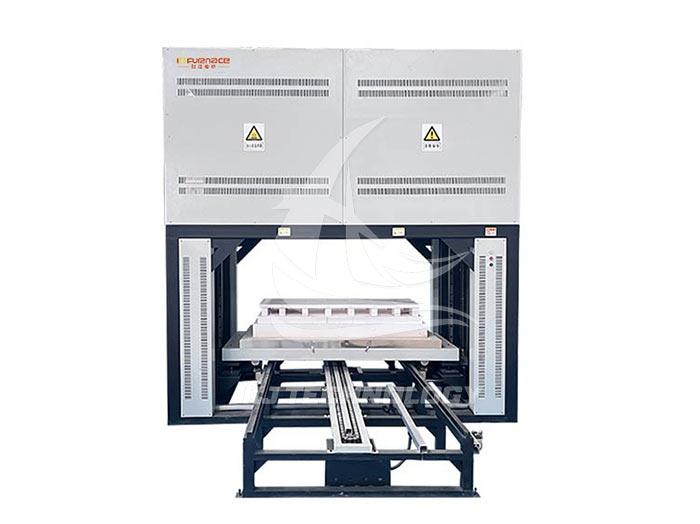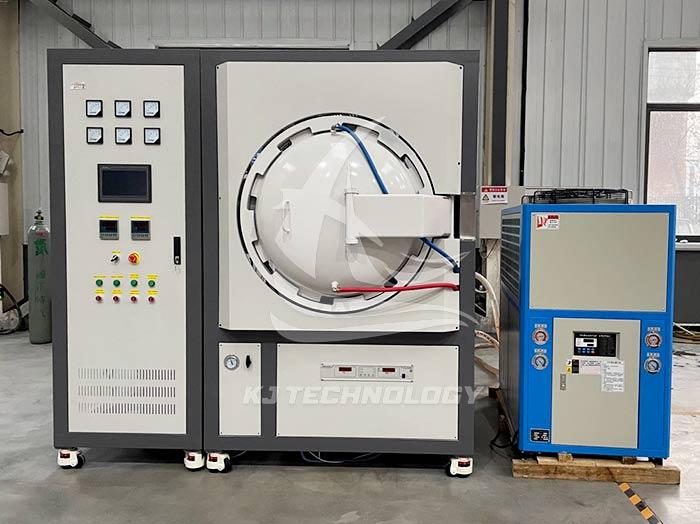Application of High Temperature Vacuum Brazing Furnace in Automotive Manufacturing Industry
 11-20-2025 Author: KJ technology
11-20-2025 Author: KJ technology
The application of high-temperature vacuum brazing furnace in the automotive manufacturing industry is extensive and critical, mainly reflected in improving welding quality, ensuring component stability and safety, meeting the requirements of complex structural connections, and promoting energy-saving and environmentally friendly production. The specific details are as follows:
1. Core application scenarios
Manufacturing of heat exchangers
Aluminum alloy welding: Automotive heat exchangers (such as radiators and condensers) often use AA 3xxx and 4xxx aluminum alloys due to their low density and high thermal conductivity. The vacuum brazing furnace isolates oxygen through a high vacuum environment (≤ 1 × 10 ⁻ ³ Pa), avoiding defects such as oxide scale and pores, improving the wettability of the brazing material, and increasing the strength of the joint.
Complex structure connection: For non-standard shaped complex parts (such as multi-layer waterway structures), the vacuum brazing furnace completes welding in multiple stages through a stepped process to ensure uniform heating at each level and control deformation rate within 0.1mm, meeting the requirements of precision manufacturing.
Engine and chassis components
Turbocharger welding: The connection between the turbine blades and the shaft needs to withstand high temperature (>800 ℃) and high-speed rotational stress. The vacuum brazing furnace provides a non oxidizing environment, avoiding the oxidation and embrittlement of active metals such as titanium alloys at high temperatures, improving joint toughness, and extending component life.
Strengthening of chassis structural components: such as the connection of sub frame, control arm and other components, the vacuum brazing furnace reduces thermal stress through precise temperature control (± 1 ℃), avoids deformation after welding, and ensures the rigidity and durability of the chassis.
Key components of new energy vehicles
Battery module manufacturing: Electric vehicle battery units require high conductivity and thermal conductivity connections. The vacuum brazing furnace realizes the welding of copper/aluminum dissimilar materials, reduces contact resistance, improves thermal conductivity, and enhances the energy density and cycle life of battery packs.
The motor housing and power electronic components, such as IGBT modules and electric drive systems, require high reliability brazing. Vacuum environment eliminates defects such as pores and cracks, improves welding qualification rate, and meets the rigorous vibration and temperature cycle testing of new energy vehicles.
2. Analysis of Technical Advantages
Non oxidizing welding environment
Vacuum degree ≤ 1 × 10 ⁻ ³ Pa, completely isolate oxygen and impurities, and avoid the decrease in joint strength caused by oxidation in traditional brazing. For example, the welding scrap rate of high nickel alloy components has decreased.
High precision temperature control system
Adopting distributed temperature measurement and thermal field simulation algorithms, the furnace uniformity is within ± 5 ℃, meeting the brazing standards. For example, when welding aluminum alloy heat exchangers, temperature fluctuations should be controlled within ± 5 ℃ to ensure uniform filling of the brazing material.
Energy saving and environmentally friendly design
The furnace adopts multi-layer ceramic fiber and metal reflective screen composite insulation, with lower heat loss than traditional refractory brick furnace body; The waste heat recovery device uses high-temperature exhaust gas to preheat workpieces, reducing the daily power consumption of a single device.
Modularization and Intelligence
The bell jar type and horizontal furnace body can flexibly adapt to components of different sizes; The industrial Internet of Things module supports remote monitoring and process recipe storage and retrieval, reducing the generation time of fault diagnosis reports and shortening the average repair time.
3. Industry application cases
The vacuum brazing furnace customized for a certain automobile company adopts the flux free red copper brazing process, which solves the problems of residue and porosity after traditional welding processes, reduces the leakage rate of water pipe joints, and improves the efficiency of single batch production.
Develop a stepped vacuum brazing process for the honeycomb sealing ring of aircraft engines, with higher joint strength to meet the stringent requirements of high-end equipment.
In the production line of new energy vehicle battery modules at a certain research institute, its vacuum brazing furnace achieves welding of copper/aluminum dissimilar materials, reduces contact resistance, improves thermal conductivity, and helps to increase the energy density of battery packs.








